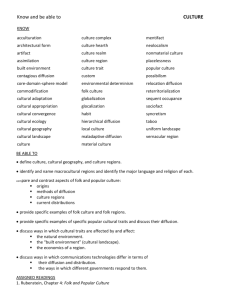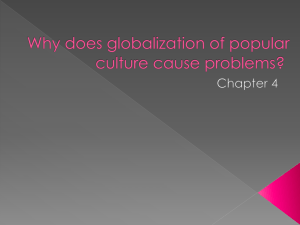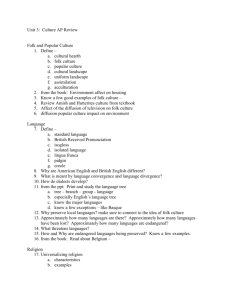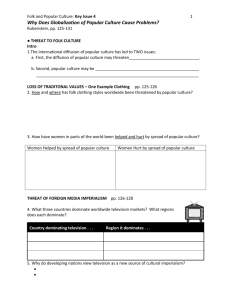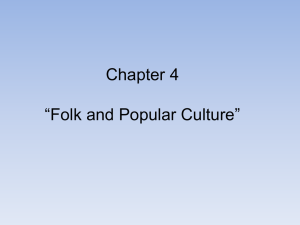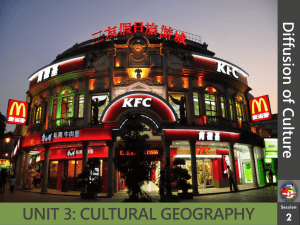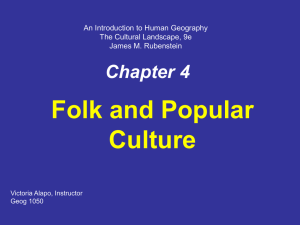UNIT III: Cultural Patterns and Processes I: Concepts of Culture, Folk
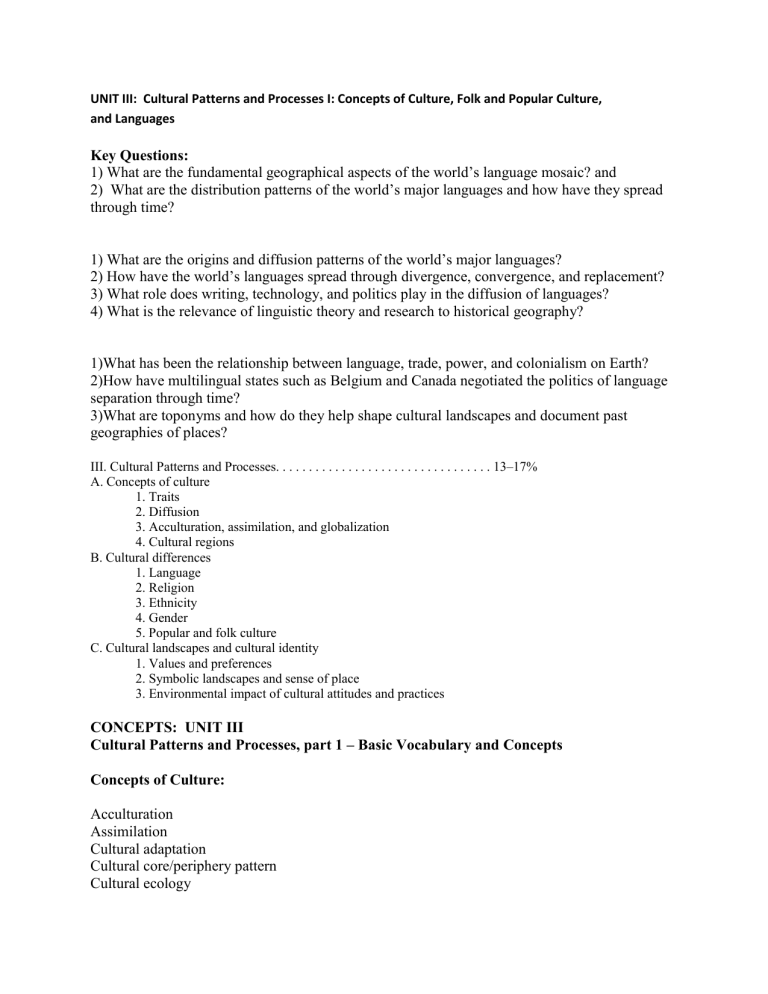
UNIT III: Cultural Patterns and Processes I: Concepts of Culture, Folk and Popular Culture, and Languages
Key Questions:
1) What are the fundamental geographical aspects of the world’s language mosaic? and
2) What are the distribution patterns of the world’s major languages and how have they spread through time?
1) What are the origins and diffusion patterns of the world’s major languages?
2) How have the world’s languages spread through divergence, convergence, and replacement?
3) What role does writing, technology, and politics play in the diffusion of languages?
4) What is the relevance of linguistic theory and research to historical geography?
1)What has been the relationship between language, trade, power, and colonialism on Earth?
2)How have multilingual states such as Belgium and Canada negotiated the politics of language separation through time?
3)What are toponyms and how do they help shape cultural landscapes and document past geographies of places?
III. Cultural Patterns and Processes. . . . . . . . . . . . . . . . . . . . . . . . . . . . . . . . . 13–17%
A. Concepts of culture
1. Traits
2. Diffusion
3. Acculturation, assimilation, and globalization
4. Cultural regions
B. Cultural differences
1. Language
2. Religion
3. Ethnicity
4. Gender
5. Popular and folk culture
C. Cultural landscapes and cultural identity
1. Values and preferences
2. Symbolic landscapes and sense of place
3. Environmental impact of cultural attitudes and practices
CONCEPTS: UNIT III
Cultural Patterns and Processes, part 1 – Basic Vocabulary and Concepts
Concepts of Culture:
Acculturation
Assimilation
Cultural adaptation
Cultural core/periphery pattern
Cultural ecology
Cultural identity
Cultural landscape
Cultural realm
Culture
Culture region
Formal – core, periphery
Functional – node
Vernacular (perceptual) – regional self awareness
Diffusion types
Expansion – hierarchical, contagious, stimulus
Relocation
Innovation adoption
Maladaptive diffusion
Sequent occupance
FOLK AND POPULAR CULTURE:
Adaptive strategies
Anglo-American landscape characteristics
Architectural form
Built environment
Folk culture
Folk food
Folk house
Folk songs
Folklore
Material culture
Nonmaterial culture
Popular culture
Survey systems
Traditional architecture
LANGUAGE:
Creole
Dialect
Indo-European languages
Isogloss
Language
Language family
Language group
Language subfamily
Lingua franca
Linguistic diversity
Mono-/multilingual
Official language
Pidgin
Toponymy
Trade language


